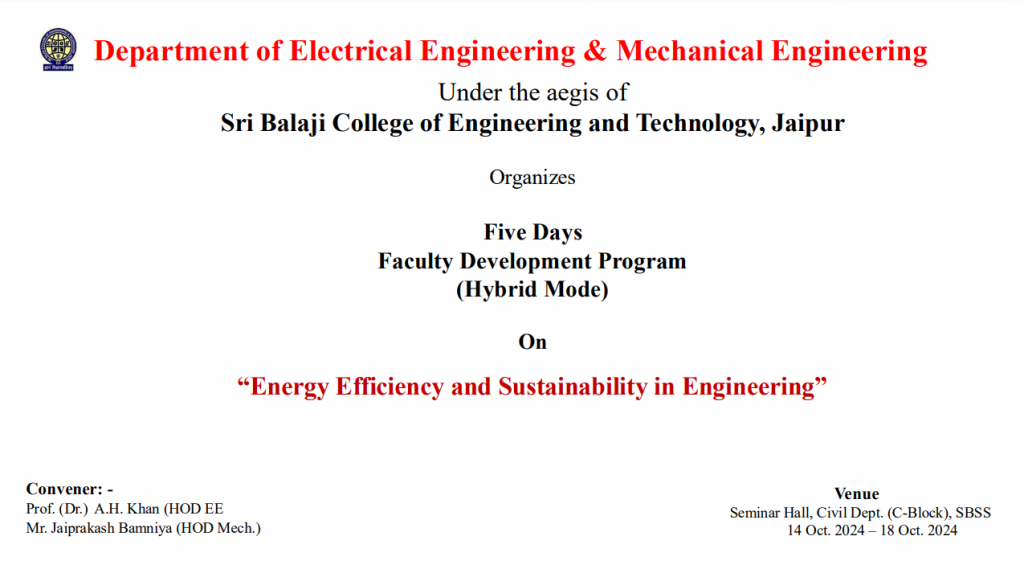
Energy Efficiency and Sustainability in Engineering
Introduction: Energy efficiency and sustainability are critical concerns in modern engineering. As the world grapples with environmental challenges like climate change, resource depletion, and increasing energy demands, engineers are at the forefront of developing technologies and solutions that promote sustainability. These concepts focus on reducing energy consumption, optimizing resource use, and ensuring that engineering practices minimize their environmental impact.
Key Concepts:
1. Energy Efficiency: Energy efficiency in engineering refers to optimizing the use of energy in processes, systems, and technologies to perform a task or produce an outcome with minimal energy waste. It involves the design, implementation, and optimization of systems to use less energy for the same output. Key areas include:
Building Systems: Designing energy-efficient HVAC systems, insulation, and smart lighting to reduce the energy demand in buildings.
Industrial Processes: Streamlining manufacturing processes to minimize energy consumption through advanced machinery, better material use, and process optimization.
Transport Systems: Engineering vehicles and public transport systems to use alternative fuels, electricity, and hybrid technologies to enhance fuel efficiency.
Energy Generation and Distribution: Focusing on optimizing power plants, grids, and renewable energy sources to ensure less energy is lost during generation and distribution.
2. Sustainability: Sustainability in engineering means designing systems and technologies that meet present needs without compromising the ability of future generations to meet their needs. It encompasses environmental, social, and economic dimensions. Sustainable engineering considers:
Renewable Energy Integration: Shifting from fossil fuels to renewable energy sources like solar, wind, and hydropower. These sources are not only cleaner but also inexhaustible.
Material Use and Recycling: Engineers focus on using sustainable materials, reducing waste, and ensuring materials are recyclable at the end of their lifecycle.
Lifecycle Assessment (LCA): A systematic approach to assessing the environmental impacts associated with all stages of a product’s life, from raw material extraction to end-of-life disposal or recycling.
Green Building Design: Engineers are increasingly involved in creating buildings that use fewer resources, generate less waste, and have a reduced carbon footprint throughout their lifecycle.
Trends in Energy Efficiency and Sustainability:
1. Smart Grids: Smart grids are an innovation in electrical engineering aimed at increasing energy efficiency by integrating digital technologies with traditional electrical grids. This allows for better monitoring, data analysis, and real-time management of energy distribution, reducing energy losses.
2. Circular Economy: Engineers are playing a critical role in the transition to a circular economy, which emphasizes reusing, recycling, and repurposing materials. In this system, products and materials are kept in use for as long as possible, minimizing waste and the need for new resources.
3. Energy Storage Solutions: Advances in energy storage technologies, such as batteries, are crucial for both energy efficiency and sustainability. Energy storage allows for the capture and use of renewable energy when it’s not being generated (e.g., solar energy at night), making renewable sources more reliable.
4. Sustainable Transportation: Engineering solutions, such as electric vehicles (EVs), fuel-efficient public transit, and alternative transportation fuels (e.g., hydrogen), are essential in creating a more sustainable transportation sector. Engineers are focusing on reducing the carbon footprint of transportation by improving the efficiency of engines and promoting alternative energy vehicles.
5. Zero-Energy Buildings: Engineers are increasingly designing buildings that generate as much energy as they consume. Through a combination of energy-efficient systems and renewable energy sources (such as solar panels), these buildings contribute to the reduction of energy demand and greenhouse gas emissions.
Challenges:
Economic Costs: The transition to energy-efficient and sustainable technologies often involves high upfront costs. For instance, building solar or wind energy infrastructure requires significant investment.
Technological Limitations: Many energy-efficient solutions, such as battery storage and renewable energy technologies, are still evolving and may have limitations in terms of efficiency, capacity, or scalability.
Regulatory and Policy Barriers: Engineers often face challenges related to policies and regulations that may not always incentivize sustainable practices or energy-efficient innovations.
Conclusion: Energy efficiency and sustainability are becoming integral to all fields of engineering. As technological advancements continue, engineers are finding new ways to reduce energy consumption, lower emissions, and develop sustainable practices that will support future generations. Whether it’s through renewable energy integration, the design of more energy-efficient buildings, or sustainable materials management, engineering will play a pivotal role in shaping a more sustainable future.
